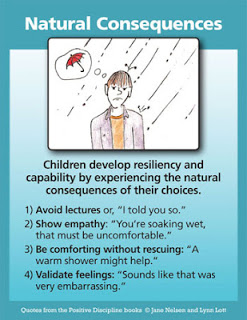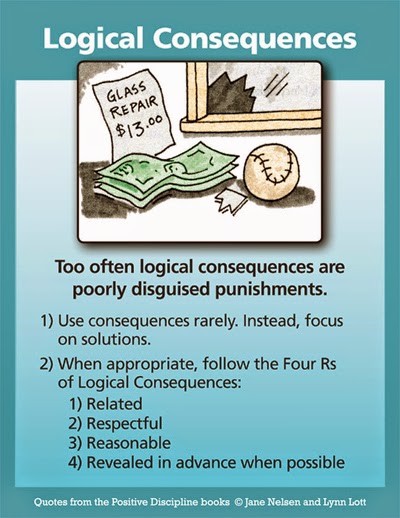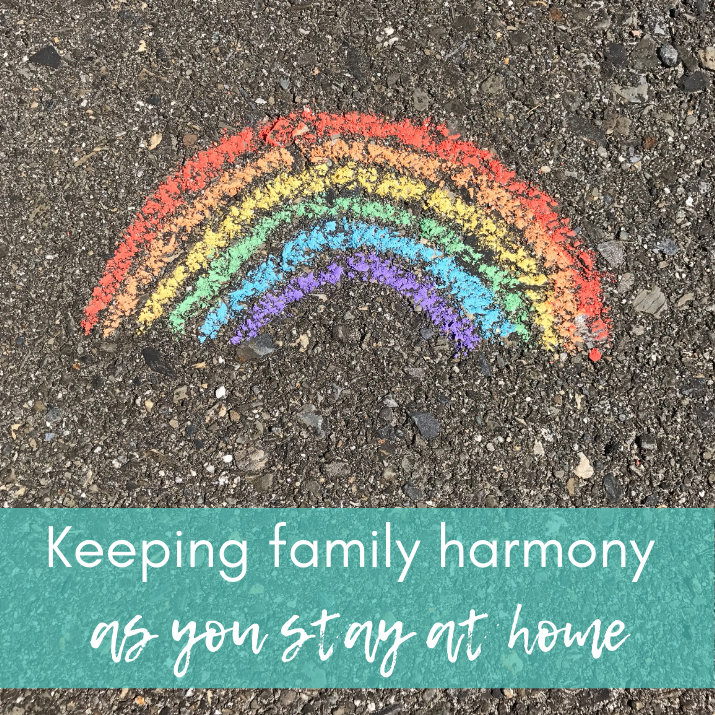
In my last week’s newsletter, I asked readers if there were certain areas they would like me to write on via the frame of COVID-19 and staying at home. I had a huge response to this so over the next little while, my content will focus on addressing issues readers sent through.
Today’s key issue is family harmony! As you can see below many families are finding it challenging to have everyone at home day in day out without being able to see others or go out to usual activities.
I need help knowing how to create harmony between the almost 14yo boy who is only happy when on his computer, almost 12yo who wants to ‘help’ around the house when I just want to tap away on my computer working, and the 10yo who wants to push everyones’ buttons. The 14yo has physically hurt the 10yo so many times – I blame both of them.
Struggling to get the 14yo outside – he’s a hermit at heart. Even with no access to internet he finds inside sedentary things to do, like read, which means energy continues to be unleashed on siblings in a negative way. Exercise for internet time worked yesterday, nothing is working today.
The kids are fighting back against the timetable we’ve agreed for their work (which we all made together, last week). We’re now running a star-chart system, which has some effect, but it’s dwindling.
Trying to keep my two kids occupied while I try and work 8 hours a day. They are good for about 30 minutes and then they start fighting and I end up spending so much time refereeing that I eventually give up and let them be on screens just to keep them quiet.
Before I write some ideas that might help keep family harmony at this time, I do want to note that the advice I give is based upon what we are currently allowed to do in the state of Victoria in Australia. As we know, COVID-19 has hit different parts of the world at varying levels, so please make sure you adhere to the advice of your government first.
Set routines but be flexible
Last week all the school kids were home from school for most of the week. One was still at school, doing full online learning for the week. The other two however finished the school term early. We have never had everyone home in the house for such long periods of time like this (as per government instructions, everyone is staying home as much as we can).
Both my husband and I are currently working from home. As I work part-time hours, at this stage, we have decided that I will be managing the daily activities of the school-age kids. It is really important if both parents are working from home, that you discuss how you are going to manage the kids. If it left unsaid, often one parent will most likely be left with a greater workload which leads to frustration and disharmony. Better to set up how you want to manage it first, so everyone is clear about their responsibilities.
I still needed to work my usual amount of hours last week, so I created a routine for the younger two kids to stick to, which you can see in the image below. I managed my workdays where I could take breaks with them when they were on breaks and go for a run with them around the block in the afternoon when they had their physical activity time.
While this obviously looks very structured, the great thing about all plans is that you can change them when you need! There were times when one of the kids suggested we swap some times around (because they had a group of friends all going online at the same time to play a game and they wanted to join in) or I wanted to swap activities to suit my work requirements. We made those changes as we needed.
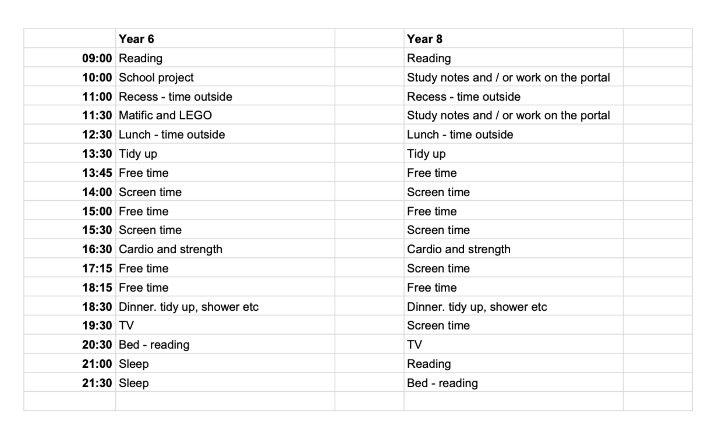
There were also random changes that happened on the go, like the whole family playing mega-rounds of Exploding Kittens after dinner or extended games of soccer being played by the kids in the back yard during outside time.
But we would have stuck to this plan about 80% of the time last week and it worked for us because:
- The kids knew what was happening for the day and they didn’t interrupt me a million times to ask when was morning tea or lunch.
- There weren’t arguments over who was using the PS4 as the boys knew how much time they had and when they could have it and worked out amongst themselves who would use what when.
- It made me focus in the dedicated work hours I had available, knowing that I had allocated times across the day to spend with the kids.
- The kids sometimes just need to nudged in the right direction to get outside or do non-screen-based activities. Once in the activity, they will often do it for longer as they realise how much they like it.
For some of us though, this week we are now in what would be our first week of school holidays. We did have plans to visit family during the school holidays, but of course, that is no longer going to be happening.
The daily routines have changed again. I would have been working reduced hours this week, so that will stay the same. When we are on school holidays and we aren’t going away, I have always had a rough plan of what we will do across the week. It always involves a mix of at home and out of the home activities and you can see how I have previously planned them out here.
This time around under restrictions due to COVID-19 out of the home activities are no longer an option, nor is having friends over. These are my normal go-to strategies to help make stay at home school holidays more harmonious.
The younger two kids and I wrote these guidelines for managing their time during the school holidays where we are following the instructions to help flatten the curve of COVID-19 and stay at home.
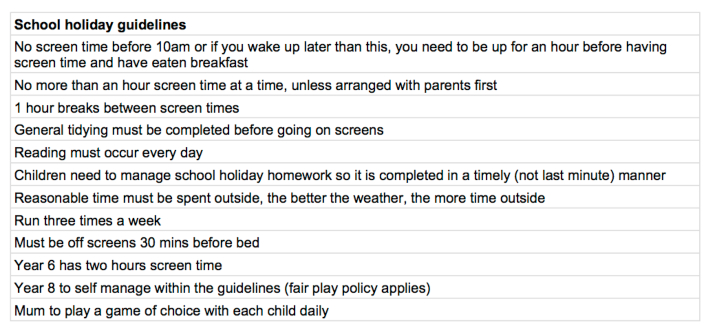
I will aim to work when they are having screen time, have breaks with them for lunch and afternoon tea, spend time with them outside when I can and run with them around the block. We have been following these guidelines since Saturday and while not perfect (the tidy up part has been forgotten a few times!), it is working really well and there has been a limited amount of squabbling amongst the 11 and 13 year olds.
The guidelines are useful as:
- they prevent the kids from constantly asking about screen time
- gives their open-ended days some loose structure
- makes sure they spend time outside
- gets them moving
- keeps me accountable to spend time with them doing what they want
You can download a copy of the spreadsheet with the routine and the guidelines for school holidays from Google Sheets here. To be able to edit a copy of this sheet, you need to make a copy of the sheet first. To do that you need to:
- Open the sheet you want to use
- Click on ‘file’, then ‘make a copy’
- Name the sheet and click on okay
- You will now be able to enter your time data into the spreadsheet. You will need a Google account to do this.
If you don’t have a Google account already you will need to sign up for one. This doesn’t mean you have to get a gmail address. Google accounts don’t have to use Gmail addresses. A Google account is simply a unified sign-in system that gives you access to Google products, including Drive, Docs, Sheets, and Slides. You can associate any email address with a Google account. To sign up for a Google Account go here.
If you are after ideas of activities to do with the kids at home, I have written quite a few posts over the years that you might find useful:
- Non technology related school holiday activities for the kids to do at home
- 10 low cost school holiday activities you can do at home
- 5 family activities to do with kids at home on the school holidays
- More school holiday activities to do at home
- Tips to keep the kids reading during the summer holidays
- Tips on managing school holiday homework
Sharing spaces

My home office is really just a small desk and I am very happy with my little space. It gets the most amazing sun in the afternoon which I adore. It is, however, situated withing a shared space. There is another desk exactly like mine which is where the 13 year old does his homework and there is a small home gym also in this room – super multifunctional room!
To make this shared space work for me, I bought some good headphones which have a noise-canceling option. I only have a couple of calls a week that I need to take on my computer and need to have everyone out of the space. I give everyone advance notice of this, so they can plan their activities around it and are not frustrated that they cannot do their weights sessions because I have a 1.5 hour Zoom call! With everyone at home, it takes some planning of who is using what spaces when and making sure this is well communicated.
I have more tips on working from home in this post – Tips for working from home with the kids at home.
For the first four days when my husband was working from home, he based himself on the dining table. It was only a day or two into this that we realised that this was unsustainable. He has lots of meetings which are now held via Zoom and with the dining table being such a communal space for us, we had to make a change as it was driving pretty much everyone (except for him!) crazy.
He has now set up his home office in our bedroom. I know this breaks many rules on not using your bedroom for work etc, but the reality for us is we have limited space and during these extreme times we have to go with what works. It is more harmonious for the whole family if he works in the bedroom, so our bedroom has now become a shared space too for the time being.
Managing fighting kids

I have written a detailed post on managing fighting kids here, but below are some key points to consider during these COVID-19 times. Please remember that I am not a psychologist nor counsellor nor child behaviour expert. What I have listed are some strategies that have worked for us:
- Work on a mutual solution – guide them through the process on creating a solution that works for both children.
- Ask a child for a solution – if one child is having a particularly difficult day, ask them for a solution in how we can change the way things are going. Acknowledge that they seem to be having a tough day and ask if there is anything I can do to help. Often they won’t give much in response, but the acknowledgment in a kind and caring manner can help them feel not like they are in trouble, but that you really want to help them. Often this can be enough to change their behaviour.
- Intervene before it explodes – sometimes I can sense the tension is rising and there is disharmony amongst the kids. I will try and create a circuit breaker/distraction of sorts to prevent it from escalating any further. This could be putting on an audio book, putting on their favourite music, starting a game or making it morning tea time!
- Separation by activity – if there has been a number of flare ups, I will direct kids to different areas of the house and different activities.
- Act of violence job – my kids will unfortunately hit and physically hurt each other on occasion. We have talked in depth and frequently about how this is an unacceptable way to solve a problem, but it still happens. The child who hits is given a household task which will take up about 15 minutes or so of their time like folding the washing. This does two things – makes them work and think about what they have done and it separates them from their siblings.
- Last man in rule – just like in ice hockey, the kids know if I see someone hurting another child, even if it is retaliation, that person will have to undertake the act of violence job. I really want the kids to understand that violence is not acceptable at all. If they have been hit, they can come to me to deal with, rather than use violence to stop the violence.
- Provocation job – if one child is deliberating and significantly provoking other children to get a response (like provoking them to hit them so they have to do an aforementioned act of violence job) they will be given a household task to complete. This is a smaller task than act of violence, something like emptying the dishwasher or tidying up the lounge room.
- Get them active – if one child is being particularly challenging I will get them to take the dog for a walk, come for a run with me or go on a run on their own. For the moment at least we can still do this!
- Encourage them to stay with me – again if one child appears to causing most of the grief, I will encourage them to hang out with me and do whatever I am doing and engage them in conversation. This is different to the tasks I set them in the above examples. This is more about creating a point of reconnection with the child and attempting to alter their current mood.
- Remove the ball/bat/book etc – if the arguments are over an item. I will take it and let them know when they can play with it without argument they can come and get it from me.
Managing kids not co-operating
What happens when you have your agreed guidelines or a set routine, but the kids don’t co-operate? At these times I will use either natural or logical consequences. The Positive Discipline website is an excellent parent resource and defines these consequence as follows:
Natural consequences – A natural consequence is anything that happens naturally, with no adult interference. When you stand in the rain, you get wet. When you don’t eat, you get hungry. When you forget your coat, you get cold.
Logical consequences – Logical consequences are different from natural consequences in that they require the intervention of an adult—or other children in a family or a class meeting.
Here are two examples of how you can use consequences when kids aren’t co-operating with a set routine you have agreed upon so you can work at home:
Natural consequence – if you have an agreed routine that requires the kids to do a set amount of work before being able to have screen time, then you let the natural consequences of time play out. This may mean they miss their afternoon screen time if time runs out.
Logical consequence – if one sibling continues to wind up another sibling and cause disharmony, then a logical consequence is they have to do a household job of that child. If the child being wound up is responsible for setting the dinner table and getting everyone a glass of water for their meal, then the child causing the disharmony will have to do that task.
What about reward charts?

Personally we have never used reward charts. For those of you thinking they might work for you in this time, here are a few snippets from articles worth reading on the topic before you start on them:
I like to call this phenomenon, in which reward systems become pervasive in family life, a “reward economy.” In reward economies, kids learn to trade desirable behavior for a reward. Sometimes the reward comes directly, in the form of toys, ice cream, or books; sometimes its value is stored, like currency, in stickers or other objects that can be exchanged at a later date. Whatever the system, reward economies promote a transactional model for good behavior: Children come to expect a reward for good behavior and are hesitant to “give it away for free,” like the 8-year-old boy who wanted a reward for helping his brother.
Some of the hazards of sticker charts include the much-discussed risk of undermining kids’ intrinsic motivation, or the need to offer more and better rewards as the original ones lose their appeal. But perhaps more distressingly, reward economies also affect how children think about relationships.
Source: The Atlantic
But there may be ways to strategically use rewards:
So, should you ever use rewards to gain your child’s cooperation? Maybe.
Sometimes the natural results of actions can serve as rewards. For instance, you might tell your child, “If you’re dressed and ready to go to school by 7:50, we’ll have time to play a game before the bus comes.” The connection, here, between the child’s actions and the outcome is obvious, logical, and easy to implement.
Source: Psychology Today
It is natural for there to be an adjustment phase as we all settle into our new normal under the COVID-19 pandemic. This will commonly see moments of disharmony amongst most families. It is likely that we will all be home together for a number of weeks, so it is worth putting in some time to plan with the kids on how you will manage their and your time to keep family harmony.

